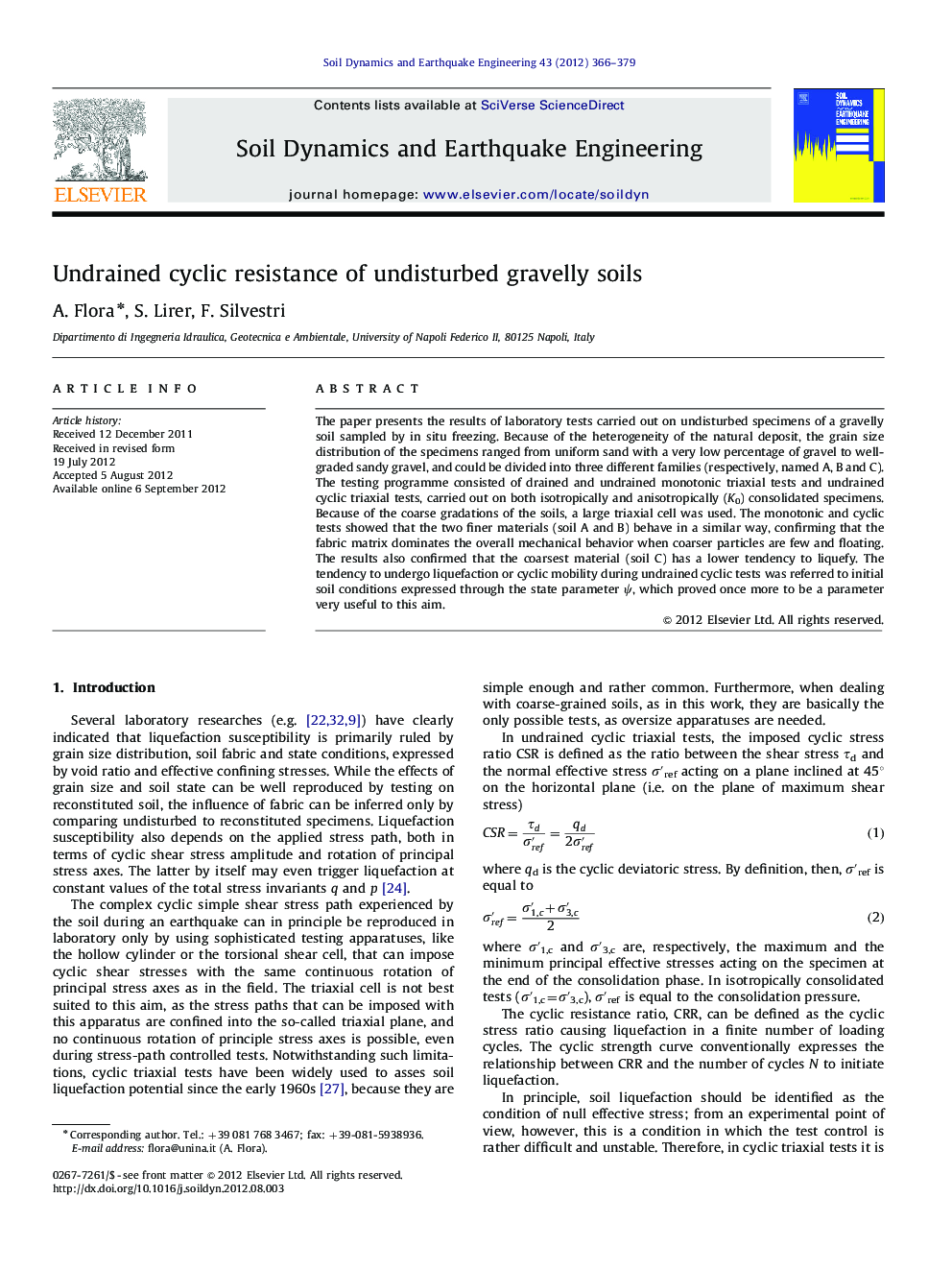| Article ID | Journal | Published Year | Pages | File Type |
|---|---|---|---|---|
| 304440 | Soil Dynamics and Earthquake Engineering | 2012 | 14 Pages |
The paper presents the results of laboratory tests carried out on undisturbed specimens of a gravelly soil sampled by in situ freezing. Because of the heterogeneity of the natural deposit, the grain size distribution of the specimens ranged from uniform sand with a very low percentage of gravel to well-graded sandy gravel, and could be divided into three different families (respectively, named A, B and C). The testing programme consisted of drained and undrained monotonic triaxial tests and undrained cyclic triaxial tests, carried out on both isotropically and anisotropically (K0) consolidated specimens. Because of the coarse gradations of the soils, a large triaxial cell was used. The monotonic and cyclic tests showed that the two finer materials (soil A and B) behave in a similar way, confirming that the fabric matrix dominates the overall mechanical behavior when coarser particles are few and floating. The results also confirmed that the coarsest material (soil C) has a lower tendency to liquefy. The tendency to undergo liquefaction or cyclic mobility during undrained cyclic tests was referred to initial soil conditions expressed through the state parameter ψ, which proved once more to be a parameter very useful to this aim.
► Liquefaction test results on undisturbed gravely specimens are rare in the literature. ► The coarser soil has proved to have a larger resistance to liquefaction. ► K0 consolidation brings to an overestimate of liquefaction resistance. ► State parameter ψ may be useful to interpret the liquefaction tests.
